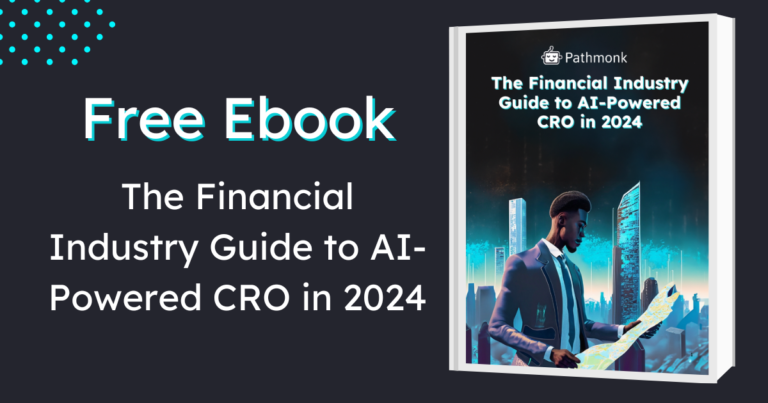
Nurtured leads aren’t just more likely to convert—they also spend 47% more than non-nurtured ones. But here’s the kicker: 79% of marketing leads still never convert. Why? Most of them are left hanging without the right attention at the right time.
In 2025, sticking to outdated lead nurturing tactics is like trying to fill a leaky bucket. Buyers now hop between channels, compare dozens of options, and expect hyper-personalized experiences. A standardized email sequence is the perfect way to be forgotten.
To thrive, marketers need to adapt—using advanced tools, innovative strategies, and real-time insights to engage leads at every touchpoint.
This guide will show you how to leave outdated approaches behind and master the art of lead nurturing in a way that boosts conversions and builds lasting relationships. Stay tuned 👇
Table of Contents
How Lead Nurturing Truly Works
In 2025, every marketer should know that effective lead nurturing requires a combination of behavioral psychology, advanced technology, and strategic timing to truly resonate. High-impact lead nurturing thrives on trust-building through micro-commitments—small, low-risk actions that gradually increase a lead’s engagement.
Each step strengthens the relationship, making the next commitment feel natural. By using progressive profiling and interactive elements, marketers can ease leads toward larger conversions without overwhelming them.
To create the right micro-commitment elements, lead nurturing also relies heavily on predictive analytics to anticipate what your leads want before they know it themselves. By analyzing historical and real-time data, AI tools can predict behaviors like purchase likelihood or churn risk, enabling marketers to deliver the right content at the perfect time.
And gone are the days of email-only strategies! Today’s leads interact with brands across social media, search engines, websites, and more. The most effective campaigns take an omnichannel approach, meeting leads where they are. Coordinating these touchpoints ensures a seamless, cohesive journey that drives results.
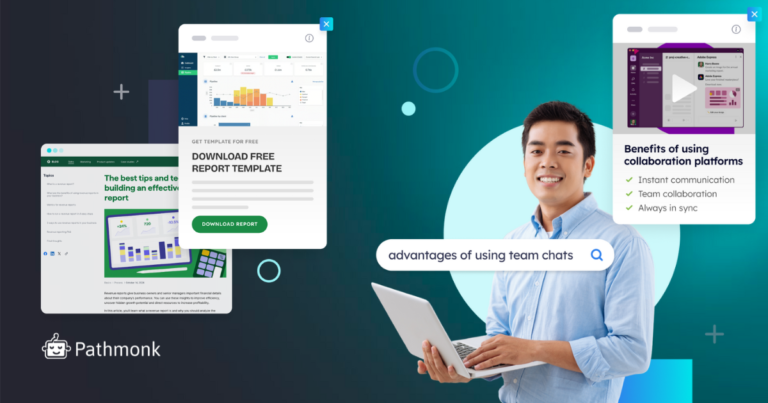
6 Effective Strategies for Lead Nurturing
Effective lead nurturing strategies require timely interactions that guide leads from interest to decision. To do this effectively, you need strategies that are rooted in real-world behavior, designed to meet leads where they are, and backed by measurable results. Here are some important lead nurturing strategies to create a long lasting and recurring audience.
1. Behavior-triggered automations for cross-channel engagement
Did you know that leads who receive timely follow-ups are 9 times more likely to convert? Behavior-triggered automations allow you to capitalize on this by responding immediately to a lead’s actions.
Your automation can look something like this:
Action | Trigger | Next Step |
Downloaded a whitepaper | Shows interest in a specific topic | Email with a related webinar invitation or an expert guide. |
Visited the pricing page | Indicates potential purchase intent | Retargeting ad with a customer success story or tailored incentive offer. |
Abandoned a form | Hesitation in taking action | SMS reminder with a direct link to complete or contact support. |
For instance, imagine a lead downloads a guide about optimizing operations. Within hours, they receive a personalized email inviting them to a webinar on the same topic. At the same time, they’re shown a retargeting ad featuring a testimonial from a company that tackled similar challenges.
These orchestrated touchpoints work together to keep your brand top of mind.
2. Super-personalized nurturing e-mails based on behavior
Email still delivers the highest ROI of any marketing channel. Now imagine the impact personalized, behavior-based emails can have in your lead nurturing strategy!
Let’s say a lead clicks on a link in an e-mail to explore your pricing page. Instead of sending a generic follow-up, you can set up a workflow that does the following:
- Send an e-mail offering a case study about how your offering delivers true value.
- If the lead opens the email, a second email follows two days later with a short video explaining ROI.
- If the lead doesn’t engage, they receive an email with an invitation to schedule a live demo tailored to their needs.
By dynamically adjusting content based on behavior, you’re creating conversations and inviting the lead to take an active part in this interaction.
3. Intent-based retargeting campaigns
Retargeting works because it focuses on leads who’ve already shown interest. But to make it work better, align campaigns with intent levels. Here are some examples of high, medium and low intent behaviors to guide your strategy.
High Intent | Medium Intent | Low Intent |
Pricing page visits | Multiple blog views | Browsing homepage only |
Demo request initiated | Clicks on email CTAs | General social media clicks |
For example, if a lead visits your pricing page twice in one week, serve them an ad featuring a client testimonial about ROI. If another lead reads several blogs but hasn’t explored your services, retarget them with an ad linking to an educational webinar. Matching ad content to intent keeps your efforts focused and effective.
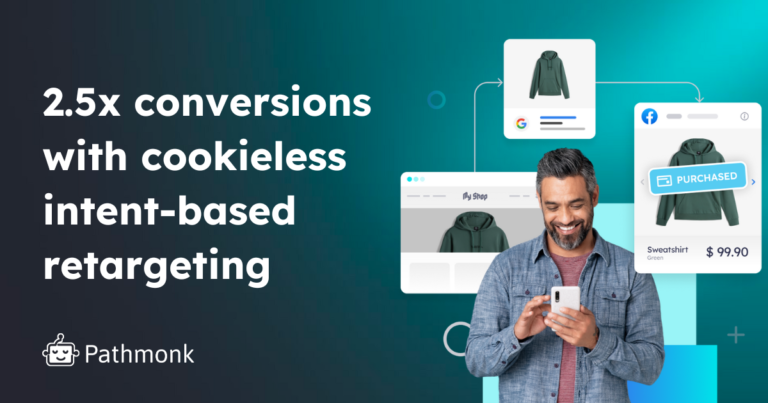
4. Content tailored to each buyer’s journey stage
Leads are looking for different things depending on where they are in the buyer’s journey. Your content should be prepared with the user’s needs in mind, for enhanced chances of engagement.
A content strategy with the buyer’s journey in mind might look something like this:
Journey Stage | Content Type | Purpose |
Educational blog posts, quizzes | Build brand awareness and spark curiosity. | |
Case studies, comparison guides | Help leads evaluate their options and understand your value. | |
Free trials, detailed demos | Facilitate the final push toward purchase with actionable solutions. |
Think of this as storytelling. During the awareness stage, you’re introducing your brand’s world. In the consideration stage, you’re painting a picture of how your product or service fits. By the decision stage, you’re showing exactly how it works for them.
5. Exclusive invitations to exclusive communities
Everyone likes to feel special, right? Creating private groups for leads in specific industries or roles fosters a sense of belonging and builds trust.
Imagine a LinkedIn group exclusively for HR leaders exploring AI-powered solutions. Inside, you host monthly “Ask Me Anything” sessions with your product experts and share exclusive resources. This not only nurtures leads but also positions your brand as a thought leader.
6. Webinars and networking events
Webinars and events are a great way to build relationships. You’re meeting and talking to your prospects in a more relaxed environment, fostering opportunities to bond and create valuable relationships.
A webinar workflow focused on lead nurturing can have these steps:
- A lead signs up for a webinar on industry trends.
- After the webinar, they receive an email with a recording and a tailored resource related to their engagement during the session.
- High-value attendees are invited to a virtual roundtable or an in-person executive breakfast.
This layered approach deepens connections and makes leads feel valued.
Tailoring Lead Nurturing Strategies for Different Industries
Each industry has its quirks, challenges, and opportunities when it comes to lead nurturing. What resonates with a SaaS lead may fall flat in e-commerce, and vice versa. Here are some ways to adapt your strategies to specific industries while keeping it personal and practical.
E-commerce: Turning browsers into recurring buyers
E-commerce leads make decisions faster, but they’re easily distracted. To nurture effectively, you need to meet them at the right moment with the right message.
Remember to take advantage of immediacy for effective lead nurturing. Take this workflow, for instance:
- A visitor abandons their cart containing luxury skincare products.
- An hour later, they receive an email reminding them of the items they left behind, with an additional incentive: free shipping if they complete the purchase within 24 hours.
- Two days later, if the purchase isn’t completed, they see a retargeting ad featuring glowing customer reviews of the same products.
This approach taps into urgency and social proof, two powerful motivators in e-commerce.
Increase e-commerce sales with personalized experiences
Turn your e-commerce visitors into loyal customers with AI-powered personalization.
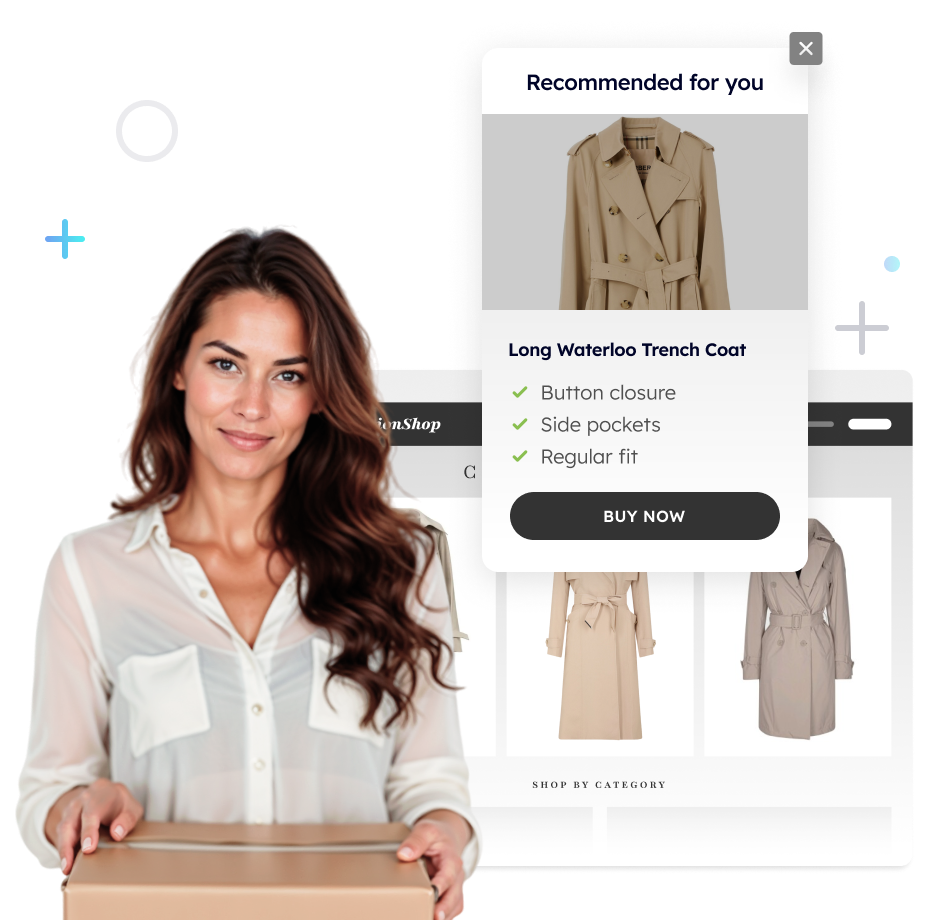
SaaS: The art of educating without overwhelming
For SaaS, the buying journey can feel like a marathon. Leads often need to be educated about features, benefits, and ROI before committing to a subscription. But too much information too soon? That’s a fast track to overwhelm.
Take the case of a B2B SaaS offering workflow automation. Instead of bombarding a lead with feature comparisons, start with an interactive product quiz that helps them uncover their biggest pain points. Once completed, they receive a personalized report showcasing how your solution fits their needs. Follow up with a live Q&A session where they can ask direct questions about implementation.
Some effective touchpoints for SaaS leads can include:
- Interactive product tours: Replace generic demos with self-guided, interactive tours that let leads explore features most relevant to their business needs.
- Behavior-triggered trials: Use predictive analytics to detect when leads are ready for a trial and automatically prompt them with a customized offer or onboarding experience.
- Upsell nurturing: For current users, set up nurturing workflows based on product usage data to suggest upgrades or additional features at the right time.
The key for SaaS is gradual engagement—build trust with baby steps, showing value without pressure.
Finance: Building trust, one interaction at a time
In finance, trust is everything. Leads want to feel confident before making significant financial decisions.
Imagine a wealth management firm targeting professionals planning for retirement. Instead of pitching services upfront, offer an interactive retirement calculator. After the lead uses it, follow up with a tailored email: “Based on your goals, here’s how we can help you retire by [age].” Then invite them to a one-on-one consultation to review their options.
This combination of data, education, and personal touch makes nurturing in finance feel less like marketing and more like a partnership.
Manufacturing: Simplifying complex decisions
Manufacturing buyers often deal with long buying cycles and high-stakes decisions that involve multiple stakeholders. Remember to skip the jargon-heavy brochures and offer memorable experiences. Don’t know how to do this? Take a look at these examples:
- Interactive configuration tools: Allow leads to customize products to their specifications, making it easier to visualize and justify their purchase.
- Stakeholder-specific nurturing: Create workflows that cater to different decision-makers, such as engineers (technical specs) and procurement teams (cost savings).
- Video storytelling: Use short, compelling videos to showcase real-world applications of your products, emphasizing quality and reliability.
The goal is to simplify the decision-making process while showing you understand their unique needs.
Professional services: You’re a partner, not a vendor
For professional services, it’s imperative to show that you’re the man – or women – for the job. Leads need to see your expertise in action and feel like they’re part of something bigger.
Take an HR consultancy firm, for example. Imagine they’re targeting mid-sized tech companies. This firm could create an exclusive Slack channel for HR managers. In this group, members gain access to real-time answers to pressing questions, free templates for onboarding, and previews of upcoming industry reports. Periodically, the firm hosts private workshops tailored to member challenges, such as reducing turnover in hybrid teams.
This approach nurtures leads while creating a sense of belonging and value before they’ve even signed on as clients.
The Power of Timing in Lead Nurturing
Timing here is aligning your nurturing efforts with the exact moment a lead is most receptive. Advanced lead scoring models combined with AI-driven insights allow marketers to predict optimal engagement windows based on historical and real-time behavior. For instance, if a lead frequently interacts with your content during lunch breaks or late evenings, you can tailor your outreach to those moments to maximize impact.
The key to perfect timing lies in leveraging triggers. Behavioral triggers, such as abandoning a cart, visiting a pricing page, or engaging with a social media post, provide actionable opportunities to connect with leads when their intent is highest.
Beyond behavior, external triggers—like industry trends, regulatory changes, or seasonal peaks—can also shape the timing of your campaigns. Marketers who align nurturing efforts with these contextual signals create a seamless experience that feels intuitive and timely to the lead.
But timing isn’t just about immediate responsiveness—it’s also about pacing the journey. Bombarding a lead with content can overwhelm them, while long silences risk losing their interest entirely. Finding the right cadence requires constant testing and optimization.
Dynamic workflows that adjust pacing based on engagement levels ensure that your nurturing efforts remain relevant without becoming intrusive, striking the perfect balance between persistence and patience.
Future-Proofing Your Lead Nurturing Strategy with Pathmonk
Pathmonk is the perfect partner for creating effective lead nurturing strategies. By incorporating more behavioral data than most tools, Pathmonk packs your team with the information they need to design personalized nurturing strategies.
Say goodbye to poorly qualified leads. Say hello to highly-qualified leads, increased engagement and cross-channel improved conversions.
Increase +180%
leads
demos
sales
bookings
from your website with AI
Get more conversions from your existing website traffic delivering personalized experiences.
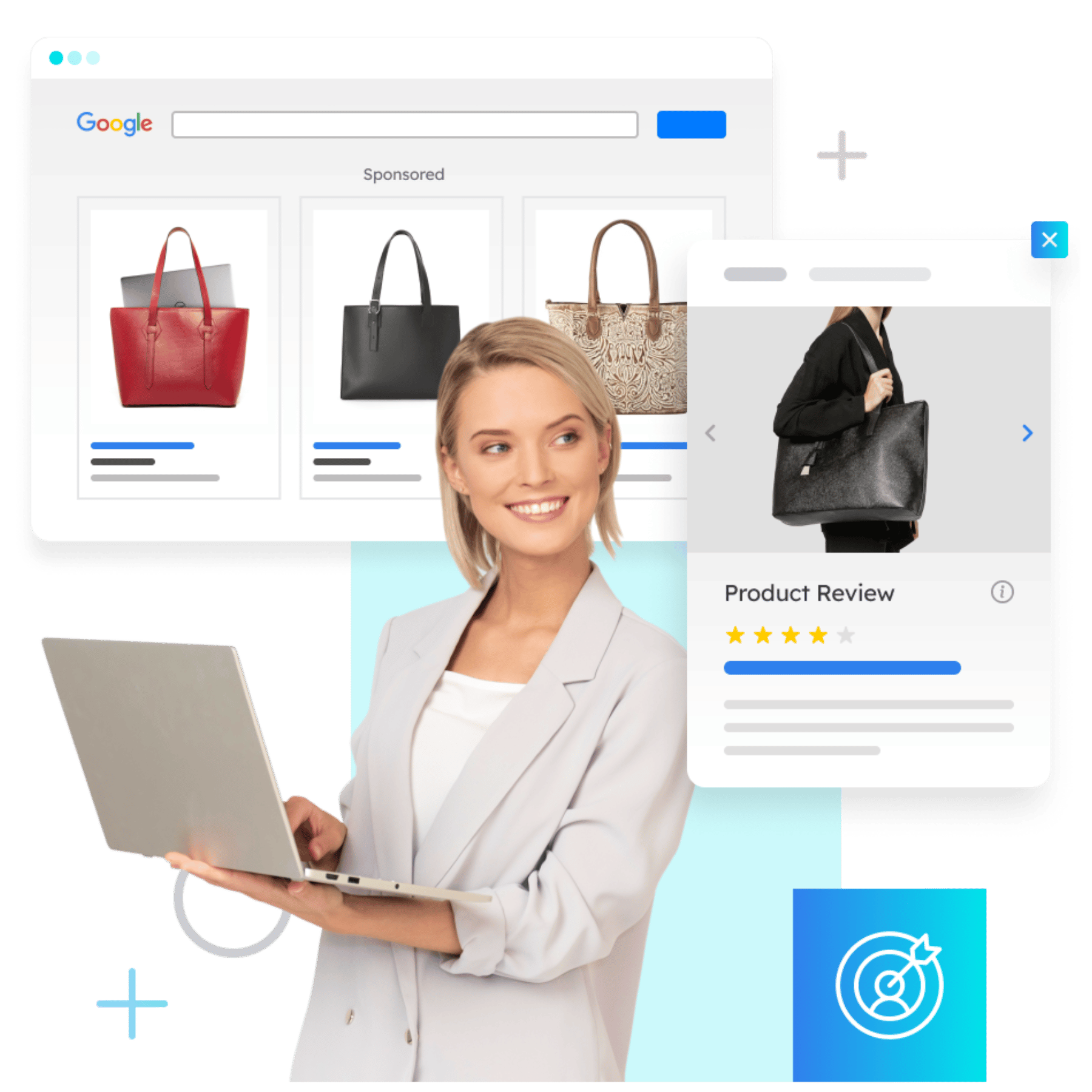
- AI-driven personalization: Pathmonk tailors website content and offers to individual visitor preferences and behaviors, creating a unique experience for each lead and packing your team with valuable information.
- Cookieless retargeting: With privacy regulations limiting the use of cookies, Pathmonk employs advanced algorithms to track visitor behavior without relying on third-party cookies.
- Predictive lead nurturing insights: Pathmonk provides data-driven insights into what actions and content are most likely to resonate with specific leads.
- Impact on multiple channels: Pathmonk works on top of any other acquisition or nurturing tactics you’re setting. Paid campaigns? E-mail automation? Pathmonk makes sure that you get more prospects from your existing traffic.
Test out Pathmonk with this personalized interactive demo, or book a product tour with one of our specialists. Install Pathmonk now to increase conversions up to 800% by January 2025!


